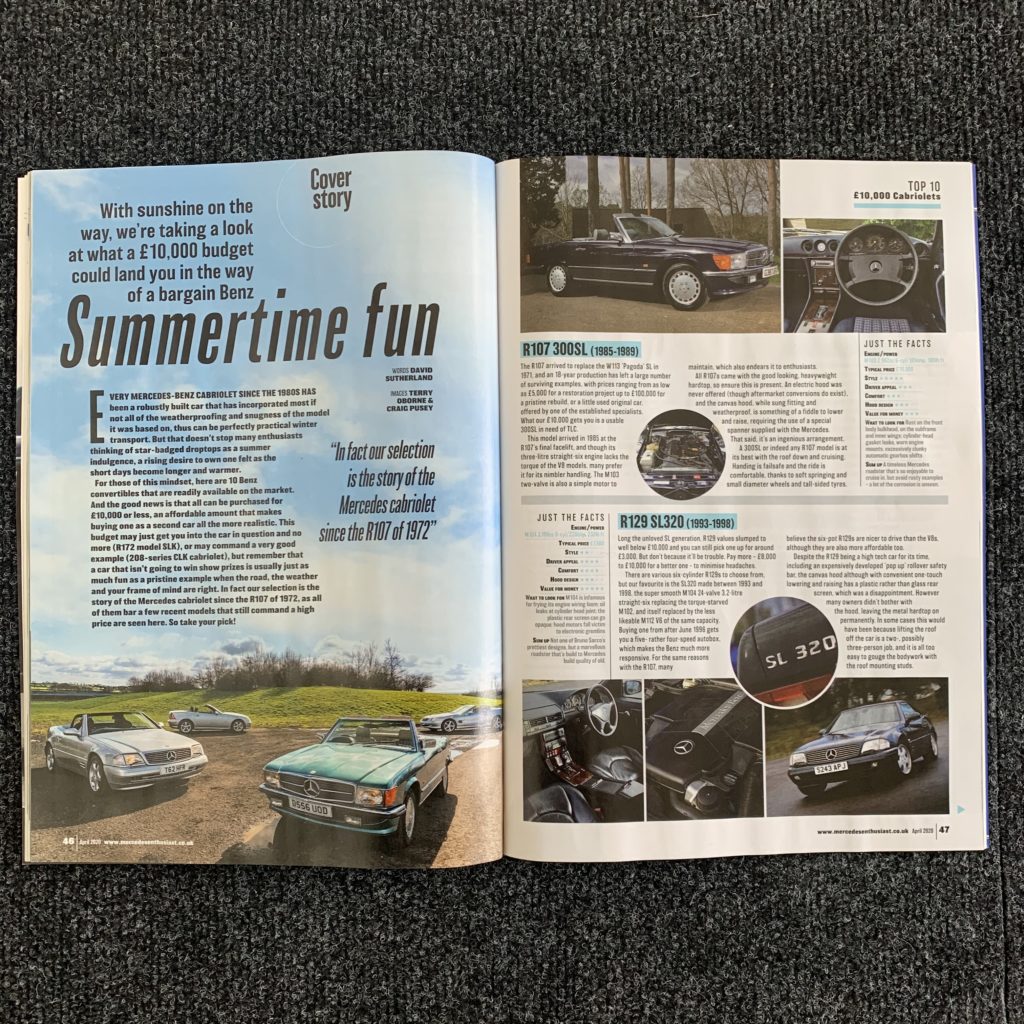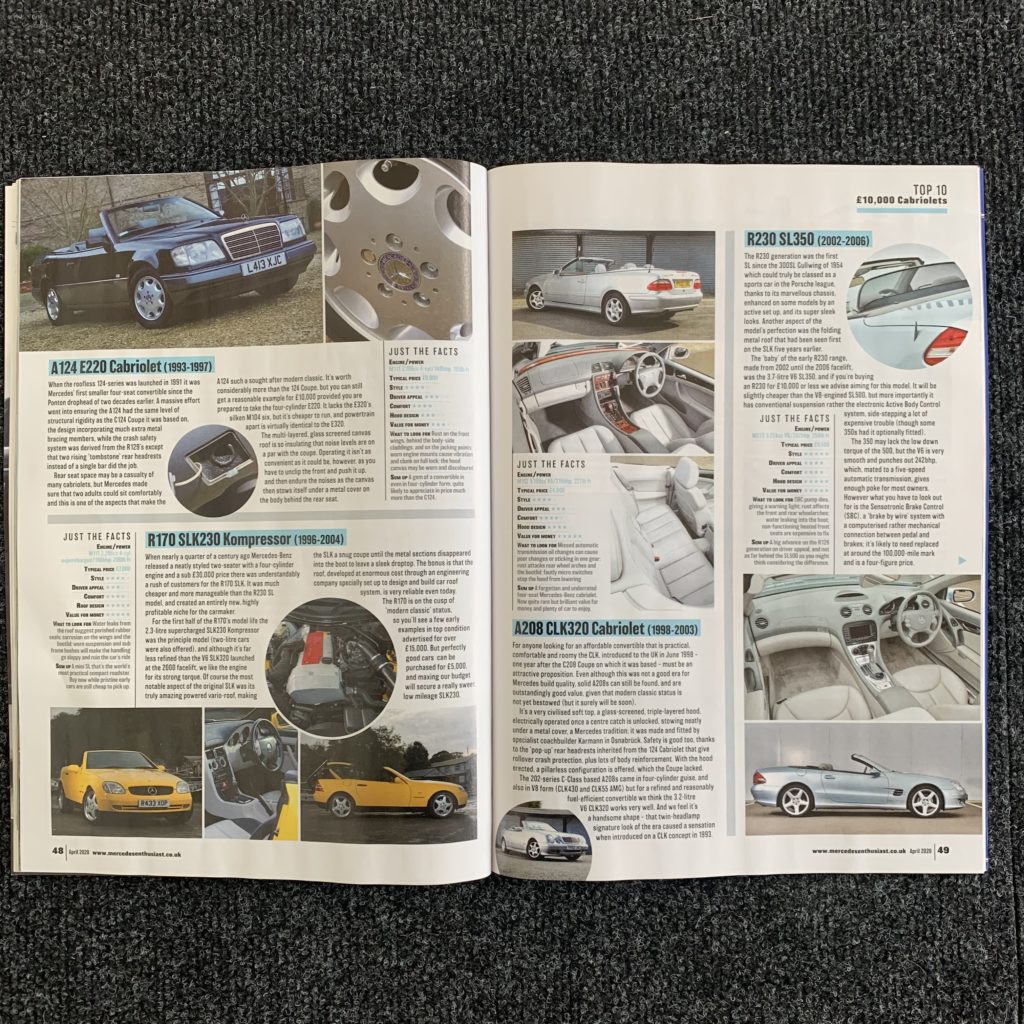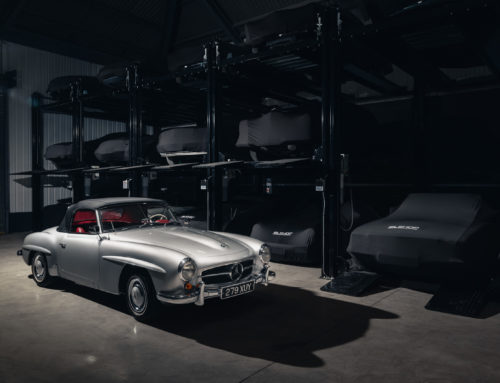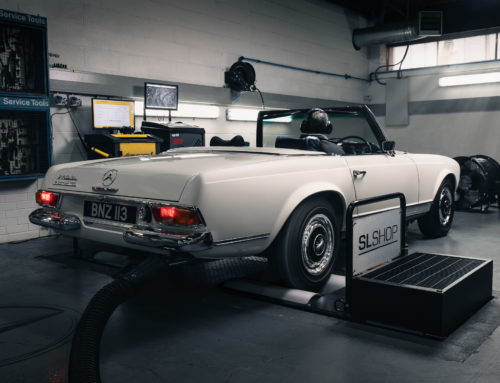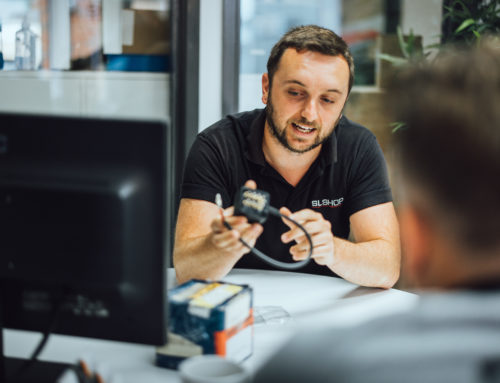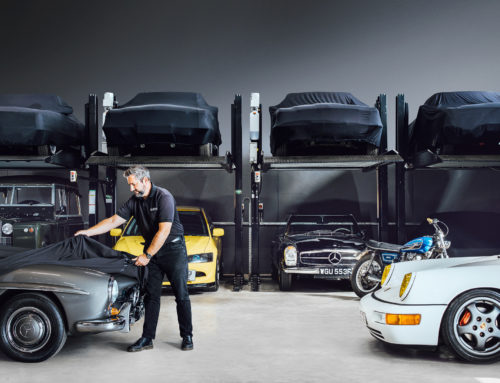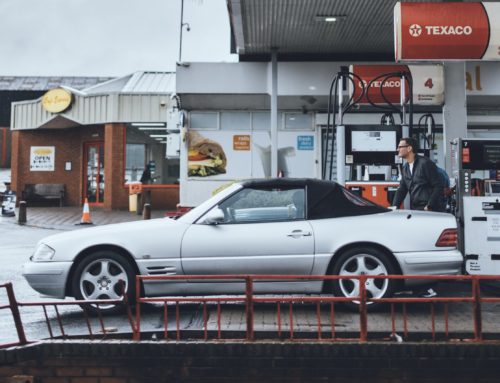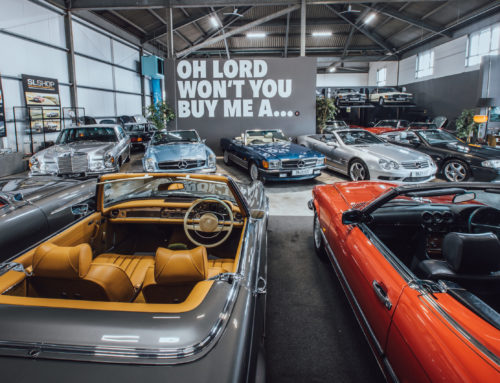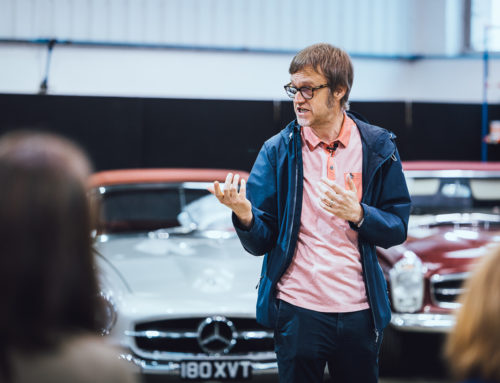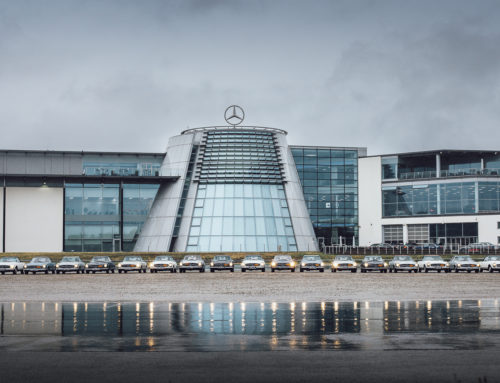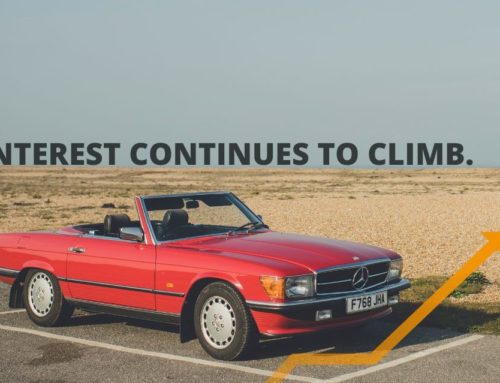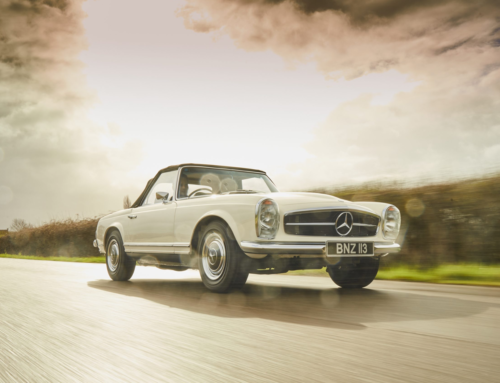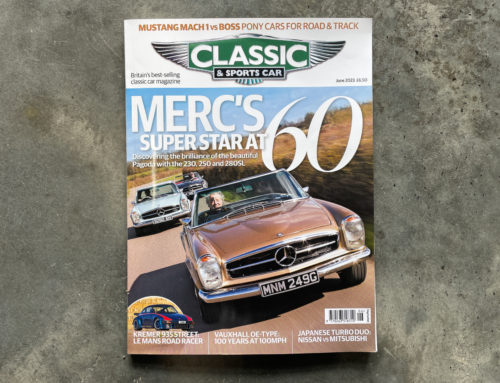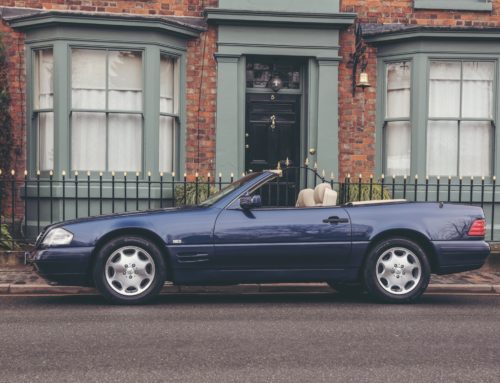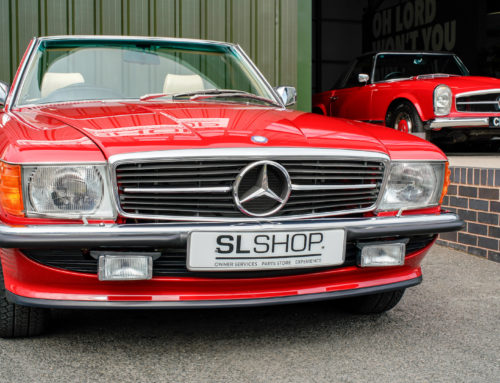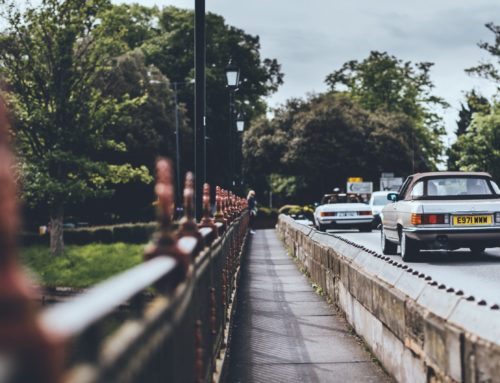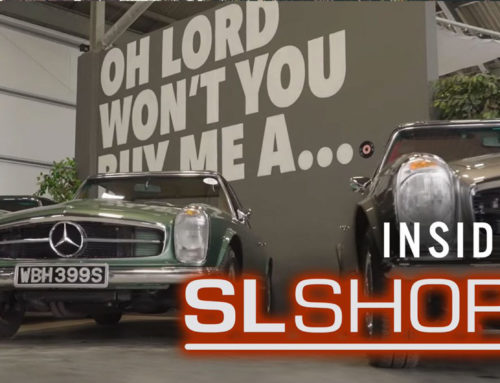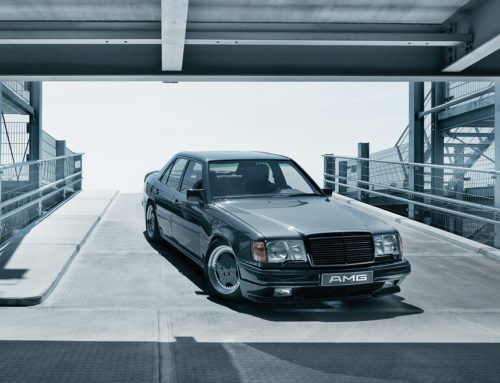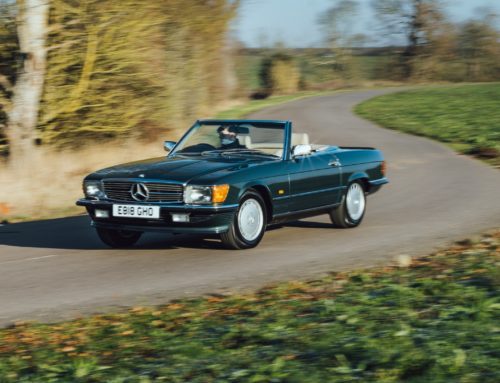With sunshine on the way, we’re taking a look at what a £10,000 budget could land you in the way of a bargain Benz
Every Mercedes-Benz Cabriolet since the 1980s has been a robustly built car that has incorporated most, if not all, of the weatherproofing and snugness of the model it was based on, thus can be perfectly practical winter transport. But that doesn’t stop many enthusiasts thinking of star-badged droptops as a summer indulgence, a rising desire to own one felt as the short days become longer and warmer.
For those of this mindset, here are 10 Benz convertibles that are readily available on the market. And the good news is that all can be purchased for £10,000 or less, an affordable amount that makes buying one as a second car all the more realistic.
This budget may just get you into the car in question and no more (R172 model SLK), or may command a very good example (208-series CLK cabriolet), but remember that a car that isn’t going to win show prizes is usually just as much fun as a pristine example when the road, the weather and your frame of mind are right. In fact, our selection is the story of the Mercedes cabriolet since the R107 of 1972, as all of them bar a few recent models that still command a high price are seen here. So, take your pick!
R107 300SL (1985-1989)
The R107 arrived to replace the W113 ‘Pagoda’ SL in 1971, and an 18-year production has left a large number of surviving examples, with prices ranging from as low as £5,000 for a restoration project up to £100,000 for a pristine rebuild, or a little used original car, offered by one of the established specialists. What our £10,000 gets you is a usable 300SL in need of TLC.
This model arrived in 1985 at the R107’s final facelift, and though its three-litre straight-six engine lacks the torque of the V8 models, many prefer it for its nimbler handling. The M103 two-valve is also a simple motor to maintain, which also endears it to enthusiasts.
All R107s came with the good looking, heavyweight hardtop, so ensure this is present. An electric hood was never offered (though aftermarket conversions do exist), and the canvas hood, while snug fitting and weatherproof, is something of a fiddle to lower and raise, requiring the use of a special spanner supplied with the Mercedes. That said, it’s an ingenious arrangement.
A 300SL or indeed any R107 model is at its best with the roof down and cruising. Handling is failsafe and the ride is comfortable, thanks to soft springing and small diameter wheels and tall-sided tyres.
R129 SL320 (1993-1998)
Long the unloved SL generation, R129 values slumped to well below £10,000 and you can still pick one up for around £3000. But don’t because it’ll be trouble. Pay more – £8,000 to £10,000 for a better one – to minimise headaches.
There are various six-cylinder R129s to choose from, but our favourite is the SL320 made between 1993 and 1998, the super smooth M104 24-valve 3.2-litre straight six replacing the torque-starved M102, and itself replaced by the less likeable M112 V6 of the same capacity. Buying one from after June 1996 gets you a five – rather four-speed autobox, which makes the Benz much more responsive. For the same reasons with the R107, many believe the six-pot R129s are nicer to drive than the V8s, although they are also more affordable too.
Despite the R129 being a high-tech car for its time, including an expensively developed ‘pop up’ rollover safety bar, the canvas hood although with convenient one-touch lowering and raising has a plastic rather than glass rear screen, which was a disappointment. However, many owners didn’t bother with the hood, leaving the metal hardtop on permanently. In some cases, this would have been because lifting the roof off the car is a two, possibly, three-person job, and it is all too easy to gouge the bodywork with the roof mounting studs.
A124 E220 Cabriolet (1993 – 1997)
When the roofless 124-series was launched in 1991 it was Mercedes’ first smaller four-seat convertible since the Ponton drophead of two decades earlier. A massive effort went into ensuring the A124 had the same level of structural rigidity as the C124 Coupe it was based on, the design incorporating much extra metal bracing members, while the crash safety system was derived from the R129’s except that two rising ‘tombstone’ rear headrests instead of a single bar did the job.
Rear set space may be a scarcity of many cabriolets, but Mercedes made sure that two adults could sit comfortably and this is one of the aspects that makes the A124 such a sought after modern classic. It’s worth considerably more than the 124 Couple, but you can still get a reasonable example for £10,000 provided you are prepared to take the four-cylinder E220. It lacks the E320’s silken M104 six, but it’s cheaper to run, and powertrain apart is virtually identical to the E320.
The multi-layered, glass screened canvas roof is so insulating that noise levels are on a par with the couple. Operating it isn’t as convenient as it could be, however, as you have to unclip the front and push it up, and then endure the noises as the canvas then stows itself under a metal cover on the body behind the rear seat.
R170 SLK230 Kompressor (1996-2004)
When nearly a quarter of a century ago Mercedes-Benz released a neatly styled two-seater with a four-cylinder engine and a sub £30,000 price there was understandably a rush of customers for the R170 SLK. It was much cheaper and more manageable than the R230 SL model, and created an entirely new, highly profitable niche for the carmaker.
For the first half of the R170’s model life the 2.3-litre supercharged SLK230 Kompressor was the principle model (two-litre cars were also offered), and although it’s far less refined than the V6 SLK320 launched at the 2000 facelift, we like the engine for its strong torque. Of course, the most notable aspect of the original SLK was its truly amazing powered vario-roof, making the SLK a snug coupe until the metal sections disappeared into the boot to leave a sleek droptop. The bonus is the roof, developed at enormous cost through an engineering company specially set up to design and build car roof systems, is very reliable even today. The R170 is on the cusp of ‘modern classic’ status, so you’ll see a few early examples in top condition advertised for over £15,000. But perfectly good cars can be purchased for £5,000, and maxing our budget will secure a really sweet low mileage SLK230.
A208 CLK320 Cabriolet (1998-2003)
For anyone looking for an affordable convertible that is practical, comfortable and roomy the CLK, introduced to the UK in June 1998 – one year after the C208 Coupe on which it was based – must be an attractive proposition. Even although this was not a good era for Mercedes build quality, solid A208s can still be found, and are outstandingly good value, given that modern classic status is not yet bestowed (but it surely will be soon).
It’s a very civilised soft top, a glass-screened, triple-layered hood, electrically operated once a centre catch is unlocked, stowing neatly under a metal cover, a Mercedes tradition; it was made and fitted by specialist coachbuilder Karmann in Osnabruck. Safety is good too, thanks to the ‘pop-up’ rear headrests inherited from the 124 Cabriolet that give rollover crash protection, plus lots of body reinforcement. With the hood erected, a pillarless configuration is offered, which the Couple lacked.
The 202-series C-Class based A208s came in four-cylinder guise, and also in V8 form (CLK430 and CLK55 AMG) but for a refined and reasonably fuel-efficient convertible we think the 3.2-litre V6 CLK320 works very well. And we feel it’s a handsome shape – that twin-headlamp signature look of the era caused a sensation when introduced on a CLK concept in 1993.
R230 SL350 (2002-2006)
The R230 generation was the first SL since the 300SL Gullwing of 1954 which could truly be classed as a sports car in the Porsche league, thanks to its marvellous chassis, enhanced on some models by an active set up, and its super sleek looks. Another aspect of the model’s perfection was the folding metal roof that had been seen first on the SLK five years earlier.
The ‘baby’ of the early R230 range, made from 2002 until the 2006 facelift, was the 3.7-litre V6 SL350, and if you’re buying an R230 for £10,000 or less we advise aiming for this model. It will be slightly cheaper than the V8-engined SL500, but more importantly it has conventional suspension rather the electronic Active Body Control system, side-stepping a lot of expensive trouble (though some 350s had it optionally fitted).
The 350 may lack the low-down torque of the 500, but the V6 is very smooth ad punches out 242bhp, which, mated to a five-speed automatic transmission, gives enough poke for most owners.
However, what you have to look out for is the Sensotronic Brake Control (SBC), a ‘brake by wire’ system with a computerised rather mechanical connection between pedal and brakes; it’s likely to need replaced at around the 100,000-mile mark and is a four-figure price.
A209 CLK200 Kompressor Cabriolet (2003-2009)
Even Mercedes-Benz, one of the car makers most committed to diesel expansion during the 2000s, stopped short of producing an oil-burning version of the droptop CLK. This left the base model choice as the CLK200, which was powered by the M271 ‘Twinpulse’ supercharged 1.8-litre unit, introduced to offer improved refinement over the larger capacity but somewhat coarse M111 Kompressor engine option.
The M271 gives spirited performance for its size, and while it’s not a particularly characterful motor, having a rather flat note, it’s ideal if you simply want to enjoy the CLK for what it is as a fun convertible. Most 180s will have a five-speed automatic transmission, but given that this is the entry model there will be some manual gearboxes around.
Mercedes decided not to give the second generation CLK and SLK-style folding metal hood, but the top it came with was the ultimate refinement of the multi-layered canvas arrangement. Its hood was optimised for low noise and thermal insulation, and also all-round visibility – the best in class on three counts, Mercedes claimed at the time. It lowers quickly and, in time honoured Mercedes-Benz fashion, disappears behind a metal cover to leave a beautiful, clean body profile. It’s definitely worth finding a CKJ from after summer 2005 as these facelifted cars have smartened up interior trim and, more crucially, Bluetooth connectivity.
R171 SLK350 (2004-2011)
Where the original, R170 SLK was dainty, the succeeding R171 with its SLR McLaren type nose was butch, or at least as butch as a small two-seat roadster could be. The model most enthusiasts would covet is the SLK55 AMG, but as these still sell for well over £10,000 we’ll opt for the SLK350, a nicely rounded version that’s a proper sports car when you want it to be, but also a relaxed cruiser when the mood prevails.
This version took over from the 320, and with 268bhp is 25 per cent more powerful. The M272 3.5-litre V6 engine, usually mated to the seven -speed 7G-Tronic transmission but sometimes having a six-speed manual gearbox, is smooth and revvy, and with plenty of mid-range as well as top end power.
The more aggressively styled R171 replacement model carried over the R170’s vario roof, and growing 72mm in body length allowed a little more interior space to enjoy than before. But the highlight of the redesigned interior was the new Airscarf neck-level heating system, which made its debut on the R171 and which directs a flow of temperature-controlled air to the neck and shoulders when the roof is down. The 2008 facelift brought an added 33bhp for the SLK350, and these will be within our £10,000 budget.
A207 E350 CDI Cabriolet (2010-2013)
Recently the world seems to have turned against diesel engines, but that can’t stop them often being the best model in the range, overall. And that applies to the 207-series, which marked the ‘return’ of the E-Class Coupe and Cabriolet after two generations of CLKs.
The top oil burner, the E350 CDI, used Mercedes’ OM642 three-litre turbo unit, introduced in 2005 and which was arguably the best six-cylinder diesel around. Linked to the 7G-Tronic seven-speeder, it gave smooth, punchy performance, and in all model ranges put the 350 V6 petrol equivalent to shame on mid-range torque, and economy. In the A207, introduced in 2010, a year after the Coupe, it was first offered with 228bhp and 398lb ft but within a year this had risen to 262bhp/457lb ft. The hood is the usual excellent Mercedes design.
You’ll see plenty of E350 CDIs for sale, this and the E250 CDI the most popular choices when new so there are a few around. Prices start at £7,500, which doesn’t seem a lot for a still modern looking premium level Cabriolet, even if city dwellers will avoid it on emissions grounds. However, brilliant though the OM642 is on a number of counts, it does have expensive problems associated with it, as the turbo, fuel injectors, inlet port motor and gearbox speed sensors are all quite likely to fail as mileage approaches six-figure numbers.
R172 SLK200 (2012-2016)
This third generation pushed the SLK’s original ‘junior’ image further into history, the 2012-launched two-seater looking more than ever like a scaled down SL (complete with some SLS AMG cues). It was also the last SLK before it was rebadged SLC – which itself will reportedly be the last of this bloodline of small roadsters.
In the diesel frenzy that led up to 2015’s ‘Dieselgate’. Mercedes offered the SLK as an oil burner for the first time, in the form of the SLK250 CDI BlueEfficiency. Competent though that model is, we turn to the SLK200 as our preferred choice within our £10,000 budget, given today’s changed feeling towards the fuel coming out the black pump.
The heart of the SLK200 is the M274 1.8-litre petrol turbocharged four-cylinder that took over from the Twinpulse compressor unit. It delivers sparkling performance and you may prefer it with the manual six-speed gearbox, certain SLK models being among the few Benzes that make sense with the third pedal. A £10,000 spend is enough for an early example, from 2012 or 2013, and it’ll quite likely be in AMG Sport trim, with 10mm lowered suspension and cross drilled brake discs AMG body styling (front and rear aprons, and side skirts), 18 – rather than 17-inch wheels and dark surround headlamps.
With sunshine on the way, we’re taking a look at what a £10,000 budget could land you in the way of a bargain Benz
Every Mercedes-Benz Cabriolet since the 1980s has been a robustly built car that has incorporated most, if not all, of the weatherproofing and snugness of the model it was based on, thus can be perfectly practical winter transport. But that doesn’t stop many enthusiasts thinking of star-badged droptops as a summer indulgence, a rising desire to own one felt as the short days become longer and warmer.
For those of this mindset, here are 10 Benz convertibles that are readily available on the market. And the good news is that all can be purchased for £10,000 or less, an affordable amount that makes buying one as a second car all the more realistic.
This budget may just get you into the car in question and no more (R172 model SLK), or may command a very good example (208-series CLK cabriolet), but remember that a car that isn’t going to win show prizes is usually just as much fun as a pristine example when the road, the weather and your frame of mind are right. In fact, our selection is the story of the Mercedes cabriolet since the R107 of 1972, as all of them bar a few recent models that still command a high price are seen here. So, take your pick!
R107 300SL (1985-1989)
The R107 arrived to replace the W113 ‘Pagoda’ SL in 1971, and an 18-year production has left a large number of surviving examples, with prices ranging from as low as £5,000 for a restoration project up to £100,000 for a pristine rebuild, or a little used original car, offered by one of the established specialists. What our £10,000 gets you is a usable 300SL in need of TLC.
This model arrived in 1985 at the R107’s final facelift, and though its three-litre straight-six engine lacks the torque of the V8 models, many prefer it for its nimbler handling. The M103 two-valve is also a simple motor to maintain, which also endears it to enthusiasts.
All R107s came with the good looking, heavyweight hardtop, so ensure this is present. An electric hood was never offered (though aftermarket conversions do exist), and the canvas hood, while snug fitting and weatherproof, is something of a fiddle to lower and raise, requiring the use of a special spanner supplied with the Mercedes. That said, it’s an ingenious arrangement.
A 300SL or indeed any R107 model is at its best with the roof down and cruising. Handling is failsafe and the ride is comfortable, thanks to soft springing and small diameter wheels and tall-sided tyres.
R129 SL320 (1993-1998)
Long the unloved SL generation, R129 values slumped to well below £10,000 and you can still pick one up for around £3000. But don’t because it’ll be trouble. Pay more – £8,000 to £10,000 for a better one – to minimise headaches.
There are various six-cylinder R129s to choose from, but our favourite is the SL320 made between 1993 and 1998, the super smooth M104 24-valve 3.2-litre straight six replacing the torque-starved M102, and itself replaced by the less likeable M112 V6 of the same capacity. Buying one from after June 1996 gets you a five – rather four-speed autobox, which makes the Benz much more responsive. For the same reasons with the R107, many believe the six-pot R129s are nicer to drive than the V8s, although they are also more affordable too.
Despite the R129 being a high-tech car for its time, including an expensively developed ‘pop up’ rollover safety bar, the canvas hood although with convenient one-touch lowering and raising has a plastic rather than glass rear screen, which was a disappointment. However, many owners didn’t bother with the hood, leaving the metal hardtop on permanently. In some cases, this would have been because lifting the roof off the car is a two, possibly, three-person job, and it is all too easy to gouge the bodywork with the roof mounting studs.
A124 E220 Cabriolet (1993 – 1997)
When the roofless 124-series was launched in 1991 it was Mercedes’ first smaller four-seat convertible since the Ponton drophead of two decades earlier. A massive effort went into ensuring the A124 had the same level of structural rigidity as the C124 Coupe it was based on, the design incorporating much extra metal bracing members, while the crash safety system was derived from the R129’s except that two rising ‘tombstone’ rear headrests instead of a single bar did the job.
Rear set space may be a scarcity of many cabriolets, but Mercedes made sure that two adults could sit comfortably and this is one of the aspects that makes the A124 such a sought after modern classic. It’s worth considerably more than the 124 Couple, but you can still get a reasonable example for £10,000 provided you are prepared to take the four-cylinder E220. It lacks the E320’s silken M104 six, but it’s cheaper to run, and powertrain apart is virtually identical to the E320.
The multi-layered, glass screened canvas roof is so insulating that noise levels are on a par with the couple. Operating it isn’t as convenient as it could be, however, as you have to unclip the front and push it up, and then endure the noises as the canvas then stows itself under a metal cover on the body behind the rear seat.
R170 SLK230 Kompressor (1996-2004)
When nearly a quarter of a century ago Mercedes-Benz released a neatly styled two-seater with a four-cylinder engine and a sub £30,000 price there was understandably a rush of customers for the R170 SLK. It was much cheaper and more manageable than the R230 SL model, and created an entirely new, highly profitable niche for the carmaker.
For the first half of the R170’s model life the 2.3-litre supercharged SLK230 Kompressor was the principle model (two-litre cars were also offered), and although it’s far less refined than the V6 SLK320 launched at the 2000 facelift, we like the engine for its strong torque. Of course, the most notable aspect of the original SLK was its truly amazing powered vario-roof, making the SLK a snug coupe until the metal sections disappeared into the boot to leave a sleek droptop. The bonus is the roof, developed at enormous cost through an engineering company specially set up to design and build car roof systems, is very reliable even today. The R170 is on the cusp of ‘modern classic’ status, so you’ll see a few early examples in top condition advertised for over £15,000. But perfectly good cars can be purchased for £5,000, and maxing our budget will secure a really sweet low mileage SLK230.
A208 CLK320 Cabriolet (1998-2003)
For anyone looking for an affordable convertible that is practical, comfortable and roomy the CLK, introduced to the UK in June 1998 – one year after the C208 Coupe on which it was based – must be an attractive proposition. Even although this was not a good era for Mercedes build quality, solid A208s can still be found, and are outstandingly good value, given that modern classic status is not yet bestowed (but it surely will be soon).
It’s a very civilised soft top, a glass-screened, triple-layered hood, electrically operated once a centre catch is unlocked, stowing neatly under a metal cover, a Mercedes tradition; it was made and fitted by specialist coachbuilder Karmann in Osnabruck. Safety is good too, thanks to the ‘pop-up’ rear headrests inherited from the 124 Cabriolet that give rollover crash protection, plus lots of body reinforcement. With the hood erected, a pillarless configuration is offered, which the Couple lacked.
The 202-series C-Class based A208s came in four-cylinder guise, and also in V8 form (CLK430 and CLK55 AMG) but for a refined and reasonably fuel-efficient convertible we think the 3.2-litre V6 CLK320 works very well. And we feel it’s a handsome shape – that twin-headlamp signature look of the era caused a sensation when introduced on a CLK concept in 1993.
R230 SL350 (2002-2006)
The R230 generation was the first SL since the 300SL Gullwing of 1954 which could truly be classed as a sports car in the Porsche league, thanks to its marvellous chassis, enhanced on some models by an active set up, and its super sleek looks. Another aspect of the model’s perfection was the folding metal roof that had been seen first on the SLK five years earlier.
The ‘baby’ of the early R230 range, made from 2002 until the 2006 facelift, was the 3.7-litre V6 SL350, and if you’re buying an R230 for £10,000 or less we advise aiming for this model. It will be slightly cheaper than the V8-engined SL500, but more importantly it has conventional suspension rather the electronic Active Body Control system, side-stepping a lot of expensive trouble (though some 350s had it optionally fitted).
The 350 may lack the low-down torque of the 500, but the V6 is very smooth ad punches out 242bhp, which, mated to a five-speed automatic transmission, gives enough poke for most owners.
However, what you have to look out for is the Sensotronic Brake Control (SBC), a ‘brake by wire’ system with a computerised rather mechanical connection between pedal and brakes; it’s likely to need replaced at around the 100,000-mile mark and is a four-figure price.
A209 CLK200 Kompressor Cabriolet (2003-2009)
Even Mercedes-Benz, one of the car makers most committed to diesel expansion during the 2000s, stopped short of producing an oil-burning version of the droptop CLK. This left the base model choice as the CLK200, which was powered by the M271 ‘Twinpulse’ supercharged 1.8-litre unit, introduced to offer improved refinement over the larger capacity but somewhat coarse M111 Kompressor engine option.
The M271 gives spirited performance for its size, and while it’s not a particularly characterful motor, having a rather flat note, it’s ideal if you simply want to enjoy the CLK for what it is as a fun convertible. Most 180s will have a five-speed automatic transmission, but given that this is the entry model there will be some manual gearboxes around.
Mercedes decided not to give the second generation CLK and SLK-style folding metal hood, but the top it came with was the ultimate refinement of the multi-layered canvas arrangement. Its hood was optimised for low noise and thermal insulation, and also all-round visibility – the best in class on three counts, Mercedes claimed at the time. It lowers quickly and, in time honoured Mercedes-Benz fashion, disappears behind a metal cover to leave a beautiful, clean body profile. It’s definitely worth finding a CKJ from after summer 2005 as these facelifted cars have smartened up interior trim and, more crucially, Bluetooth connectivity.
R171 SLK350 (2004-2011)
Where the original, R170 SLK was dainty, the succeeding R171 with its SLR McLaren type nose was butch, or at least as butch as a small two-seat roadster could be. The model most enthusiasts would covet is the SLK55 AMG, but as these still sell for well over £10,000 we’ll opt for the SLK350, a nicely rounded version that’s a proper sports car when you want it to be, but also a relaxed cruiser when the mood prevails.
This version took over from the 320, and with 268bhp is 25 per cent more powerful. The M272 3.5-litre V6 engine, usually mated to the seven -speed 7G-Tronic transmission but sometimes having a six-speed manual gearbox, is smooth and revvy, and with plenty of mid-range as well as top end power.
The more aggressively styled R171 replacement model carried over the R170’s vario roof, and growing 72mm in body length allowed a little more interior space to enjoy than before. But the highlight of the redesigned interior was the new Airscarf neck-level heating system, which made its debut on the R171 and which directs a flow of temperature-controlled air to the neck and shoulders when the roof is down. The 2008 facelift brought an added 33bhp for the SLK350, and these will be within our £10,000 budget.
A207 E350 CDI Cabriolet (2010-2013)
Recently the world seems to have turned against diesel engines, but that can’t stop them often being the best model in the range, overall. And that applies to the 207-series, which marked the ‘return’ of the E-Class Coupe and Cabriolet after two generations of CLKs.
The top oil burner, the E350 CDI, used Mercedes’ OM642 three-litre turbo unit, introduced in 2005 and which was arguably the best six-cylinder diesel around. Linked to the 7G-Tronic seven-speeder, it gave smooth, punchy performance, and in all model ranges put the 350 V6 petrol equivalent to shame on mid-range torque, and economy. In the A207, introduced in 2010, a year after the Coupe, it was first offered with 228bhp and 398lb ft but within a year this had risen to 262bhp/457lb ft. The hood is the usual excellent Mercedes design.
You’ll see plenty of E350 CDIs for sale, this and the E250 CDI the most popular choices when new so there are a few around. Prices start at £7,500, which doesn’t seem a lot for a still modern looking premium level Cabriolet, even if city dwellers will avoid it on emissions grounds. However, brilliant though the OM642 is on a number of counts, it does have expensive problems associated with it, as the turbo, fuel injectors, inlet port motor and gearbox speed sensors are all quite likely to fail as mileage approaches six-figure numbers.
R172 SLK200 (2012-2016)
This third generation pushed the SLK’s original ‘junior’ image further into history, the 2012-launched two-seater looking more than ever like a scaled down SL (complete with some SLS AMG cues). It was also the last SLK before it was rebadged SLC – which itself will reportedly be the last of this bloodline of small roadsters.
In the diesel frenzy that led up to 2015’s ‘Dieselgate’. Mercedes offered the SLK as an oil burner for the first time, in the form of the SLK250 CDI BlueEfficiency. Competent though that model is, we turn to the SLK200 as our preferred choice within our £10,000 budget, given today’s changed feeling towards the fuel coming out the black pump.
The heart of the SLK200 is the M274 1.8-litre petrol turbocharged four-cylinder that took over from the Twinpulse compressor unit. It delivers sparkling performance and you may prefer it with the manual six-speed gearbox, certain SLK models being among the few Benzes that make sense with the third pedal. A £10,000 spend is enough for an early example, from 2012 or 2013, and it’ll quite likely be in AMG Sport trim, with 10mm lowered suspension and cross drilled brake discs AMG body styling (front and rear aprons, and side skirts), 18 – rather than 17-inch wheels and dark surround headlamps.
More from Journal
CARE
THE ULTIMATE CERTIFIED SERVICING INVESTMENT PLAN
Your ownership journey matters to us, which is why we have created a simple certified servicing investment plan, tailored to your individual needs and aspirations.
Start investing today and our dedicated CARE team will work with you to increase the value and enjoyment you receive from your vehicle.
STAY IN TUNE WITH SLSHOP MOMENTS
As part of SLSHOP’s community of enthusiasts, you’ll be the first to hear about events and tours, key product offers, exciting stories from owners around the world and of course… our latest additions to the showroom. So, be the first to know and you might just sneak a car on your driveway or take your car’s condition to new heights with our exclusive replacement parts.
Or, visit SLSHOP Journal
